Metallic bone plates need to undergo several tests before gaining approval as internal fixation devices for the skeletal system. One standard, ASTM F382-99, defines the test methods for single cycle bend testing (annex A1) and for determining the bending fatigue properties (annex A2) of metallic bone plates. A summary of the test methods for annex A1 and A2 follows. For a complete description of ASTM F382-99, refer to the specification from the ASTM International organization.
Annex A1- ASTM F382-A1 measures the bending stiffness, bending structural stiffness, and bending strength from a single cycle bend test on a metallic bone plate.
Annex A1 is used to determine values for the mechanical response of bone plates to specific bending loads and provides some insight into the mechanical response of the subject bone plate. The bone plate is positioned on a four-point bend fixture (shown above) installed in an Universal Testing Machine (UTM). The bend fixture should use cylindrical rollers with diameters between 6-12mm. The recommended test configuration locates the loading rollers at one-third points. The spacing of the rollers, however, is dependent on the location of the screw holes in the bone plate. Apply bending moments of increasing magnitude via crosshead position rate control. Generate a load versus load point displacement graph. Determine the bending stiffness, bending structural stiffness and bending strength.
To perform Annex 1, the four-point bend fixture above can be used on an ADMET eXpert Single or Dual Column Universal Testing Machine Frame. ADMET has two types of controllers to set the speed, load and position limits of the test. (MTESTQuattro and eP digital push button).
Annex A2 – Test Method for determining the bending fatigue properties of metallic bone plates.
This test method is used to determine the fatigue life at a specific or over a range of bending moment levels. It may also be used to estimate the fatigue strength for a specific number of cycles. The bone plate is positioned in a four-point bend fixture so that the plate’s section that would normally bridge the fracture site is subjected to a uniform bending moment. The bone plate is subjected to a constant amplitude, constant frequency sinusoidal bending moment which is continued until the specimen fails or the runout cycle count is reached. The data generated from each plate test is used to create a M-N diagram (Bending Moment vs. Number of Cycles). Typical cyclic frequencies and runout counts are 5 Hz and 1 million cycles, respectively.
Another Intermedullary Fixation Device standard, ASTM F1264, requires a static and fatigue four-point bend test, as well as a static torsion test. Also, bone screws are subject to standard torsion testing (ASTM F543 and ASTM F115).
For more information, call 1-800-667-3220, visit ADMET or email info@ADMET.com.

